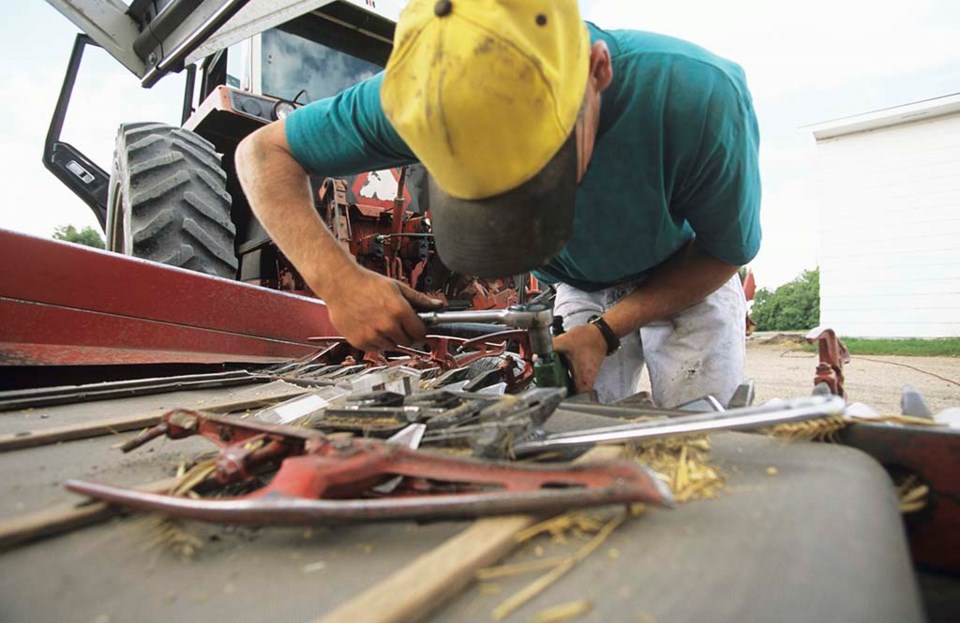CARLYLE — Very few producers have been able to get into their fields and begin seeding or pre-seed herbicide applications due to cool weather and snowstorms. One per cent of the crop is now seeded in the southeastern region which is well behind the five-year average (2017-2021) of six per cent. Widespread seeding is still seven-10 days away in some areas.
Very little precipitation was received throughout the region over the last week. The Moose Jaw area reported five mm Friday night going into Saturday morning while the Briercrest area reported one mm. While it is still very early in the growing season, soil in the region is drying fast due to wind. Spring runoff was rated as 55 per cent normal and 45 per cent below normal.
Topsoil moisture conditions appear to have improved over the winter. Adequate moisture for germination is currently present in much of the region, this will change with warm temperatures and strong winds. Cropland topsoil moisture is rated as seven per cent surplus, 80 per cent adequate, 10 per cent short and three per cent very short. Hay land and pasture topsoil moisture is rated as one per cent surplus, 78 per cent adequate, 18 per cent short and three per cent very short.
Cool weather throughout the week and much of April has producers worried about pasture conditions. Pasture conditions are rated as ten per cent good, 29 per cent fair, 36 per cent poor and 25 per cent very poor. Warm weather and light rains are needed to speed up pasture growth to allow grazing and reduce the pressure on producers to supplement with winter feed supplies.
Producers have been busy prepping for the growing season and will be rolling out into their fields as soon as the conditions allow them to. Producers are also wrapping up calving and branding and will soon be moving many of their livestock to pasture. Winterkill is being assessed across the region in areas that saw poor snow cover over the winter, 19 per cent of winter wheat and 13 per cent of fall rye have been killed off.
Provincial overview: seeding delayed
Cool temperatures and early spring snowstorms have delayed seeding for many producers across Saskatchewan. Currently, one per cent of the 2022 crop is now in the ground, well behind the five-year average (2017-2021) of five per cent. Once conditions are favourable, producers will be working very hard to get their fields seeded.
Very little precipitation was reported in the past week, which will allow fields to dry up enough for seeding to begin in regions where it was previously too wet. The most rain was reported in the Marengo area with 10 mm followed by the Marquis, Rockglen and Webb areas reporting five mm of rain. Although beneficial for pastures and hay land, farmers are hoping the rain will hold off until seeding can be completed.
Topsoil moisture for cropland, hay and pastureland is still less than ideal for proper seed germination and pasture growth. Cropland topsoil moisture is rated as five per cent surplus, 55 per cent adequate, 26 per cent short and 14 per cent very short. Hay and pastureland are rated as two per cent surplus, 52 per cent adequate, 29 per cent short and 17 per cent very short.
Spring runoff for the province has slightly improved compared to the runoff seen in 2021 and this has allowed dugouts, sloughs and other small water bodies to fill throughout many areas. Runoff was rated as five per cent above normal, 44 per cent average and 51 per cent below normal. This replenishment of water in dugouts is extremely important for livestock producers who have struggled with finding good quality water for their animals. Going into the warm summer months, timely rains will be needed to keep water quality and quantity at acceptable levels.
Livestock producers have also struggled to ration their available feed supplies through the winter until pastures are able to sustain grazing. Forage feed supplies are rated as 35 per cent adequate and 65 per cent inadequate, while feed grain supplies are rated as 55 per cent adequate and 45 per cent inadequate. Producers will need a good hay crop this year to replenish their feed supplies and ensure they have more than enough to feed their livestock next winter.
Pasture conditions across the province did not fare well throughout the drought of 2021 and they did not have the rain they needed in the fall for adequate regrowth before winter arrived, which has resulted in less than desirable pasture conditions to start the year. Pasture lands are rated as zero per cent excellent, 12 per cent good, 22 per cent fair, 37 per cent poor and 29 per cent very poor. Warm days with minimal wind are needed along with good rains to improve conditions and allow enough forage growth to support cattle throughout the summer.
There have been reports of winterkill on winter wheat, fall rye and other fall seeded crops; producers are busy assessing the damage and determining whether to reseed. The hardest-hit areas are in the southwest where snow cover was not adequate enough to protect the crop. Producers who are not able to seed are waiting for their fields to dry and preparing their equipment while others who can be in the field are spreading fertilizer and applying herbicides.




